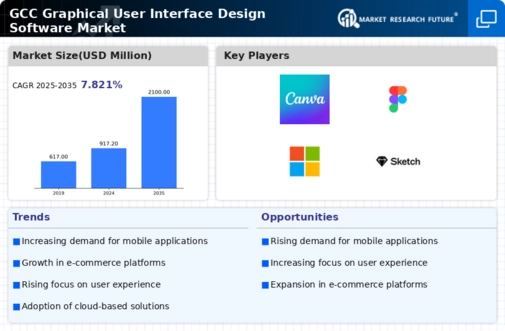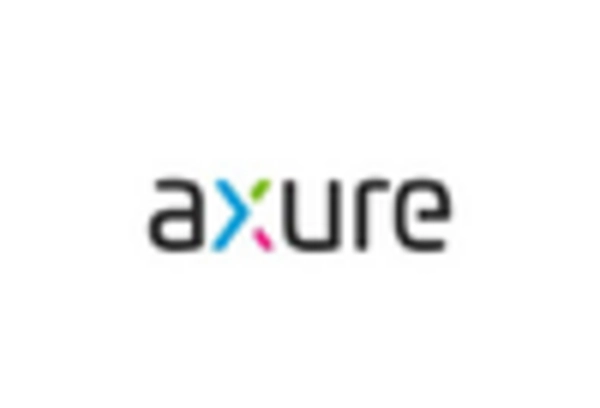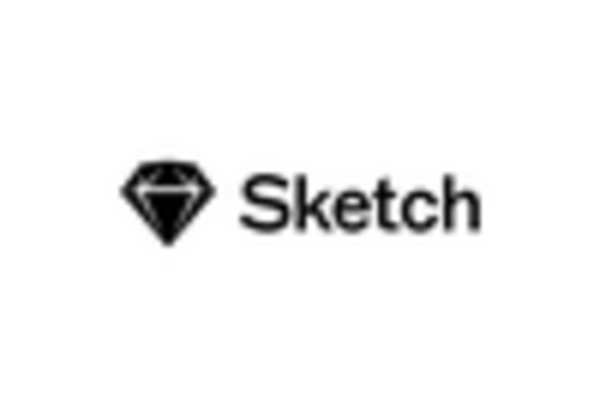The graphical user-interface-design-software market is currently characterized by a dynamic competitive landscape, driven by rapid technological advancements and increasing demand for user-centric design solutions. Major players such as Adobe (US), Figma (US), and Sketch (US) are at the forefront, each adopting distinct strategies to enhance their market positioning. Adobe (US) continues to leverage its extensive suite of creative tools, focusing on integration and innovation to maintain its leadership. Figma (US), on the other hand, emphasizes collaboration and cloud-based solutions, appealing to a growing base of remote teams. Sketch (US) has carved out a niche by prioritizing simplicity and user experience, which resonates well with designers seeking efficient workflows. Collectively, these strategies contribute to a competitive environment that is increasingly centered around innovation and user engagement.
In terms of business tactics, companies are increasingly localizing their operations to better serve regional markets, optimizing supply chains to enhance efficiency. The market structure appears moderately fragmented, with a mix of established players and emerging startups. This fragmentation allows for diverse offerings, yet the influence of key players remains substantial, as they set trends and standards that smaller companies often follow.
In October 2025, Adobe (US) announced the launch of a new AI-driven feature within its design software, aimed at automating repetitive tasks for designers. This strategic move is significant as it not only enhances productivity but also positions Adobe (US) as a leader in integrating artificial intelligence into design processes, potentially reshaping user expectations and workflows in the industry.
In September 2025, Figma (US) expanded its partnership with major tech firms to enhance its collaborative features, allowing for seamless integration with other tools. This action underscores Figma's commitment to fostering a collaborative ecosystem, which is increasingly vital in a world where remote work is prevalent. By enhancing interoperability, Figma (US) strengthens its value proposition, making it a preferred choice for teams that rely on multiple software solutions.
In August 2025, Sketch (US) introduced a new subscription model that includes additional resources for user training and support. This strategic pivot is indicative of a broader trend towards customer-centric service offerings, as it not only enhances user experience but also fosters loyalty among existing customers. By investing in user education, Sketch (US) positions itself as a partner in the design process, rather than just a software provider.
As of November 2025, the competitive trends in the market are increasingly defined by digitalization, sustainability, and the integration of AI technologies. Strategic alliances are becoming more prevalent, as companies recognize the need to collaborate to enhance their offerings and reach broader audiences. Looking ahead, competitive differentiation is likely to evolve, shifting from traditional price-based competition to a focus on innovation, technological advancements, and supply chain reliability. This transition suggests that companies that prioritize these aspects will be better positioned to thrive in an increasingly complex market.

















Leave a Comment